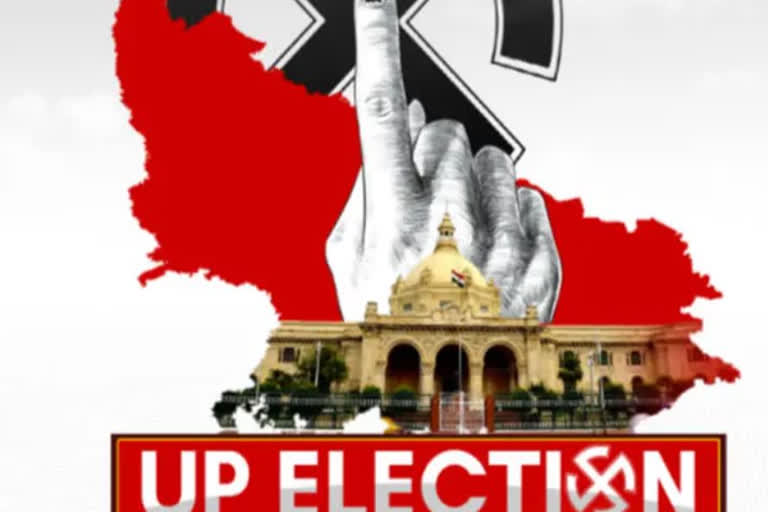Uttar Pradesh's fourth round of voting for 59 assembly seats was held on Wednesday across the Awadh, Rohilkhand and Terai regions remained consistent with trends in the earlier phases: a lower overall voting percentage (57.72 per cent) as compared to the 2017 elections (62.72 per cent). The Sitapur district, for instance, witnessed 10 per cent less voting in comparison to the previous elections, with polling percentage down by 6.5 per cent in Lakhimpur Kheri, 6 per cent less in Pilibhit, 2.5 per cent less in Rae Bareli and 3.5 per cent less in Lucknow.
In 2017, the BJP had won 50 of the 59 seats of Phase-4 while it's alliance partner Apna Dal (Anupriya Patel faction) had won one. The Jats, Yadavs and Muslim voters - considered anti-BJP - were not strong in demographic terms in this round. Therefore, in the fourth round, the BJP camp had been hopeful that the party would compensate for losses suffered in the earlier three rounds. However, ground reports suggest that the BJP gains have not been substantial. Reports suggest that the Samajwadi Party has been able to provide stiff competition to the ruling party across the region.
The vote percentage
A high voting percentage has traditionally been regarded by psephologists as a vote for change, but the principle does not hold true in all circumstances. According to pollster Vikas Jain, the low voting trend of the fourth phase is rather indicative of the lack of enthusiasm amongst BJP cadres and supporters. It is significant that in 2017 the BJP candidates had won approximately 35 seats of the region with a margin of over 30,000 votes. A lower voting percentage indicates that the energy levels amongst the BJP cadres and voters is low this time. This is also an indication that this year's contest is stiff and the margins of victory are likely to be thin.
The demographic divide
With Scheduled Castes comprising approximately 26 per cent of voters in Round-4, the votes of the community - particularly the non-Jatav SCs - will have a significant impact on the poll outcome. Ground reports suggest that sections of such voters, including the Pasi community, have apparently moved away from the BJP and that the votes of the community have been split up between the BSP, SP, Congress and the BJP. In other words, the BJP's social engineering formula of bringing together the non-Jatav Dalits and non-Yadav OBCs within the Hindutva fold - so successfully employed in past elections - has not appeared to succeed in the same manner in this election.
Samajwadi Party (SP) chief Akhilesh Yadav had not openly attempted to woo Dalit voters, but employed backchannel strategies. Former BSP leader Indrajit Saroj was appointed SP national general secretary some time back, while other backward leaders such as Lalji Verma, Ram Achal Rajbhar and RK Chaudhary were also inducted into the party. Several district zonal coordinators of the BSP had also joined the SP in the run-up to the state assembly elections.
The BJP's challenges
